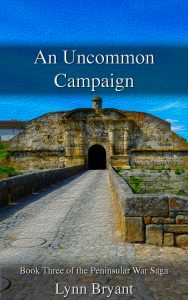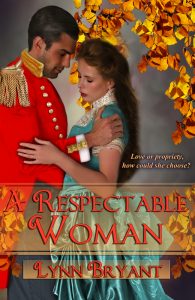
This excerpt from A Respectable Woman describes Philippa Maclay’s first Christmas in the East End as a teacher at Wentworth’s School for Girls, a charitable foundation. Daughter of a missionary who was murdered by slavers, she is obliged to support herself but is finding her post more congenial than she expected.
Wentworth’s School is directly based on Raines Foundation School, now in Bethnal Green but previously in Arbour Square in Stepney which is the school I went to back in the 1970s.
The Christmas holidays arrived, and more than half of the Wentworth’s pupils went home to their families for the celebration. The others, orphans or those whose families were unable to house them, like Joan Carter, remained at the school.
There were some ten girls left, including Carter, who was still very weak, but just beginning to get out of bed for part of each day, and Phillips, Miss Chadwick’s prize pupil, whose aristocratic relatives clearly had no place for her in their festive celebrations.
Christmas at Kola had always been primarily a religious festival, and Philippa had no experience of the more secular joys of the season. Both Miss Grafton and Miss Bentley had family with whom they would spend the holiday, and without their disapproving presence, Wentworth’s seemed to relax. The Board of Trustees had approved extra provisions for the celebrations, and Miss Chadwick, who seemed to have the ability to stretch money beyond belief, was planning a gala dinner on Christmas Day.
Philippa was looking forward to the holiday. Without her more censorious staff, Amelia relaxed, and included her junior in the holiday plans as if by right. Philippa had dreaded spending the season alone, but found that there was no question of that. Amelia was determined to give her remaining charges a proper holiday, and Philippa found her services called upon to plan and organise the day.
The school seemed quiet with most of its pupils gone, and although the girls still had their domestic duties, and scripture lessons continued, there was a holiday air. Every morning the girls set off for a walk after breakfast. Domestic tasks occupied the rest of the morning, and after luncheon, they were busy with needlework, learning their catechism or practicing their skills as parlour maid. But they were allowed more levity and more recreation time, and occasional lapses of behaviour were treated with leniency.
On Christmas Eve, they received a visit from a number of the Board of Trustees with their wives and families. The Board consisted of around twenty-five local men, mostly businessmen, with a sprinkling of solicitors, doctors and clergymen. Standing slightly to one side of the group, Philippa noticed Mr Duncan, the local vicar, with his wife, and Dr Marshall.
Prayers were held in the hall, and then the girls were called up one at a time to receive a small book from Mr Wentworth, who was Chairman of the Board. Prayer books, Philippa guessed, or some other religious tract. The Chairman then made a lengthy speech about the history and traditions of the school, and how fortunate were the girls who received their education there. Although Philippa deplored his pompous, condescending style of oratory, she reflected, looking at the scrubbed shiny faces looking up at him, that he was probably right. For the girls who made it through their time at the school and who took advantage of the opportunities it gave them, this was indeed fortunate.
At the end of Mr Wentworth’s speech, there was another prayer, and then the girls were dismissed in the charge of Mary Phillips, to wash and prepare for evening service.
Most of the Board left, to go to their own Christmas Eve services, but Mr Wentworth, along with Mr Simmonds, his deputy, and his wife, accompanied Miss Chadwick to the mistresses’ parlour. Philippa, following a sign from Miss Chadwick, joined them, as did the Duncans and Dr Marshall.
Sherry and glasses had been set out on the table, and Miss Chadwick smilingly poured, while Philippa handed out the glasses. A toast was solemnly drunk. Wentworth’s eyes were moving around the room, assessing its contents.
“Miss Chadwick, surely that bookshelf is new! And those books! I have not seen them before!”
“They were provided by Miss Maclay, sir,” Amelia said composedly. “They belonged to her late father and she has kindly placed them at the disposal of our teachers.”
Wentworth stalked across the room, his eye running over the titles. “They seem educational enough,” he said grudgingly.
“The sherry is excellent,” Mr Simmonds said, as if not wishing to be outdone in suspicion. “Not purchased with school funds, I hope?”
“The sherry was a gift from Dr Marshall, sir,” Miss Chadwick said, still pleasantly. Philippa shot a covert glance at that gentleman, and saw from the gleam in his eye that he was enjoying the scene just as much as she was.
“I did not see Carter at prayers, Miss Chadwick,” Mrs Simmonds said.
“She was not well enough to come down,” Miss Chadwick said. “But I hope she will be able to attend service tomorrow.”
“I should hope so too!” Mr Simmonds said, sententiously. “Sickness should not be used as an excuse for idleness!”
“I shall see that it does not,” Miss Chadwick agreed demurely.
“I read your report on the accident,” Mr Wentworth said. “It seemed brief.”
“I gave you all the information I had,” Miss Chadwick said. “Carter remembers very little of the event, and nothing at all of arriving back at school.”
“How can you be sure that she is not deceiving you?” Mrs Simmonds said. Philippa looked at her assessingly. She did not like Mr or Mrs Simmonds. Wentworth was pompous, self important, but basically well meaning, she decided. He might quibble about money and expenses, but he trusted Miss Chadwick to take care of the girls, and to make the right decision. Mrs Simmonds on the other hand, she was sure, would make trouble if she could. She did not know that there was anything suspicious about Carter’s illness. She just assumed the worst.
Dr Marshall spoke quietly:
“Carter was not deceiving anybody about the extent of her injuries. I was not sure that I would be able to save her. The injuries were consistent with being struck by a carriage of some kind. To be honest, I assume that the driver recognised her dress as a Wentworth’s girl and brought her home. I don’t think she could have got here by herself.”
“Then why did he not give an account of himself?” Wentworth said, peevishly. Philippa suspected he was thinking longingly of his hearth, his dinner and his cigar.
“Because he was afraid of the consequences,” Dr Marshall said casually. “Especially if he had been drinking, it would have been hard to explain how he came to run down a schoolgirl on her way back from visiting her sick father.”
“But she is on the mend now?” Mr Duncan said.
“She is much better,” Dr Marshall said.
“We must thank God that it ended so well,” the clergyman said, and Miss Chadwick, with demurely lowered eyes, murmured a devout ‘amen’.
It was not long before the visitors took their leave. Only Dr Marshall remained. When Philippa returned from escorting them to the door, she found him sprawled in one of the chairs while Amelia poured more sherry for all of them.
“Where did this come from, Amelia?” Dr Marshall asked. “It really is very good!”
“You didn’t buy it?” Philippa said, startled.
“Good Lord, no. Never heard of it until this afternoon.”
“It was a gift from Jenson’s father,” Amelia said. “He’s a stevedore at the docks and he’s always sending us gifts. I suspect the origin of most of them, which is why I kept quiet. Philippa drink up!”
Philippa smiled. “I am not accustomed to wine,” she said. “Any more and I’ll be drunk.”
“I should like to see that,” Dr Marshall said, laughing.
“Dr Marshall – you aren’t going to.”
“Call me Tony. All my friends do.”
“Tony. And will you call me Philippa?”
“Certainly. Although only when we are not on duty.” He raised his glass with a lazy smile.
“Will you come to church with us, Tony?” Amelia asked, getting to her feet.
“Why not? You should have an escort, in this neighbourhood.”
Amelia glanced at her assistant and grinned. “Oh, I’d say Philippa is a match for most local drunks in a fight. Did I tell you how she dealt with Joan Carter?”
It was dark when they set out, a neat crocodile of trimly dressed creatures, their thick winter cloaks wrapped around them, their blue bonnets bobbing along beside the two mistresses and the doctor as they made their way along the dark streets. It was a bitterly cold, clear night and the stars were miniature beacons in the sky. Looking up at them, Philippa was reminded suddenly of the African night, crisp and cold and beautiful, like the night she had met Kit Clevedon. To her horror she felt tears start behind her eyes. She was homesick. Ridiculous to feel it now, in the grey filth of the East End streets, filled with the stink of poverty and wretchedness. There was nothing here to make her think of Kola. But hurrying past the seaman’s taverns, the public houses, the brothels and the overcrowded, teeming tenements and lodging houses, she could smell the fresh clear air, could hear the gentle lowing of the oxen and the occasional whinny of the horses.
She missed it. She missed her father, with a different ache of pain, but she was becoming accustomed to that loss. She had expected it, prepared for it, and was living with it. What she had not been ready for, was this overpowering longing to see wide, open spaces instead of dirty streets, to hear the musical tones of the Mashona instead of the harsh cockney of most of her pupils. She missed her friends, the black children with whom she had grown up. She missed the girls, who had taught her to weave and the boys who had taught her to fight, and to climb trees and to use a hunting knife without hesitation or mercy, a skill which had very certainly saved her life. In the midst of this busy city she was suddenly bitterly lonely.
“Are you all right?”
Through her tears, Philippa looked up into the kind grey eyes of Tony Marshall. He had moved to walk beside her and had unobtrusively taken her arm.
“Yes, I’m sorry.” She fumbled for her handkerchief and mopped her eyes. “Don’t ask my why, but I was suddenly homesick.”
Tony glanced around him. Opposite, two sailors staggered out of a brilliantly lit doorway, their arms around two woman, raddled creatures of indeterminate age, dressed in shabby satin, shivering in the cold. Further along the road, a drunk was vomiting into the gutter. None of the girls even looked up. They had all seen such sights before.
“It’s probably the contrast,” he said wryly, and Philippa laughed.
“Probably. Do you think any of those noble gentlemen know what these girls walk past every time they go to church?”
“Oh, some of them. Does it upset you, Philippa? The sights you see here?”
“It upsets me because it’s what man has done to his own,” Philippa said. “I’ve seen the Mashona people dying of hunger when their cattle were hit by plague or when their crops failed. But those are acts of nature. These people live this way because their fellow man allows it. Expects it. I think I am very naïve in many ways.”
“I think you have lived a very different life to any other English girl I have met,” Tony said. “It makes you unusual.”
“That’s a nice way of putting it.”
He laughed. “I don’t know what else to say. Philippa, you dress the same as every other woman of your station in life. But when you walk along a London street, people turn to stare at you, because you don’t walk the same. You walk as if your skirts are a hindrance and the buildings are crowding you. And your eyes look as if they are used to a wider horizon than this.”
Philippa was silent for a moment. “I see. I didn’t realise I was so obvious.”
“It isn’t something you do, it’s who you are. There are probably dozens of missionaries’ daughters who are nothing like you. But for all your appearance and your speech and your education, you aren’t really English. Not like me, or Amelia, or any of these girls. Africa was not just somewhere you lived, it was your home. Of course you miss it.”
Philippa gave his arm a little squeeze. “That makes me feel a little less like a freak. Thank you, Tony. No more tears.”
The church, bathed in flickering candlelight, was crowded that Christmas Eve. As the girls filed into their pews, Philippa looked around at the congregation. Most of the people looked reasonably prosperous. Some were very obviously middle class, the businessmen and professional men with their wives and families. Others were probably small tradesmen, butchers and bakers, managers of factories, and some of the skilled dockworkers, like stevedores, coopers and rope makers. The poor were absent. There were no ragged clothes or bare feet in the church that Christmas Eve, and none seemed surprised at their absence. Philippa supposed they would celebrate their Christmas in the public houses, and she was not sure that she blamed them. Would prayer and thanks to God keep out the cold, and the hunger and the worry about unpaid rent and unreliable work nearly as well as three penny worth of gin or port?
Back at the school there was supper, a merry affair with at least twice as much food as usual, and no rules about talking at table, no solemn scripture reading. When it was over and prayers were said, the children were packed off to bed, and Amelia turned to her cousin.
“Where did you put them?”
“In your study. I take it you’ll want my help?”
“If you expect me to climb a stepladder you must be all about in your head!” Amelia said bluntly. “Come along Philippa, there’s work to be done.”
Curious, Philippa followed them to Amelia’s study. To her astonishment she found it piled high with boxes of greenery. There was holly and ivy and mistletoe, great boughs of fir tree, still decked with pinecones.
“What on earth is all this?” she asked, bewildered.
“To decorate the refectory and the schoolroom, of course. For Christmas.” Amelia’s voice was muffled behind the box she had picked up. “Didn’t you do that in Africa?”
“The Mashona didn’t really know that much about English Christmas customs,” Philippa said sardonically.
“Neither do you, it appears,” Tony said, holding out a box. “Prepare to be educated, then.”
“I wanted a Christmas tree,” Amelia said, as they set down their burdens in the schoolroom. “But they were too expensive, and as Tony paid for this, I couldn’t insist.”
“A Christmas tree?” Philippa was baffled.
“It’s a new idea. The Prince brought it from Germany. They set up a fir tree in the house and decorate it with baubles and candles. I saw one last year when I visited the Wentworths on Boxing Day, but I don’t suppose any of the girls have ever heard of one.”
“Then they won’t miss it,” Tony said firmly. “Stop talking and start working, Amelia. I do not plan on being here until midnight.”
But it was not far off midnight when Philippa finally fell into bed, after an evening of hanging Christmas greenery, and laughter, and conversation and wine. She had never known an evening like that. Perhaps, after all, there was something to be said for having friends of her own race and her own culture. She had never felt the lack before, having been content with her father and her African friends. But she found that although she had not enjoyed the stilted, formal social manners of many of the English visitors to the mission, or of the people she had met on her one visit to England, she did enjoy the laughter and banter of Amelia and her cousin.
Kit Clevedon had been like that, she thought, as she turned over in bed. She had often wondered about the nature of her liking for Clevedon. Having reached the age of sixteen without much interest or awareness of any of the young men she had met, she had thought that perhaps she was a little infatuated with the handsome young officer. But it had not been his looks or his charm that she had valued, she realised now. It had been his quick wit and his ready laughter, the companionship of a like-minded person for which, without realising it, she had hungered.
Christmas day passed in a whirl of activity at the school. Breakfast over, the girls walked to morning service at St George in the East again, then hurried back through the frosty streets to help prepare the Christmas dinner. Amelia had worked magic with her limited resources, although Philippa suspected that there had been additions from her cousin to swell the feast. There was roast goose with all the trimmings followed by plum pudding and mince pies. Tony was spending Christmas day with friends, although Amelia was expecting him that evening.
After luncheon, Amelia brought out a large basket of brightly wrapped gifts, and handed one to each girl. There were no religious tracts or prayer books, and the children were visibly delighted with the bright ribbons and lace handkerchief, which their mistress had provided for them.
In the afternoon there were games of hunt the slipper and Blind Man’s Buff and Charades. By the time the children went to bed after evening prayers, both they and their mistresses were exhausted. Amelia and Philippa retired to Amelia’s parlour, where Philippa was surprised to find Tony awaiting them and a cold supper set out on the table.
“Who did this?” Philippa asked, sinking gratefully into a chair.
“My housekeeper and cook,” Tony said. “I think the cab driver thought I was going to entertain my mistress until we pulled up here. Now he just thinks I’m donating my leftover Christmas dinner to the deserving poor.”
“You are,” his cousin informed him, rapidly filling a plate. “I certainly can’t afford lobster patties. Is that burgundy you’ve brought? Will you open it, please?”
Philippa smilingly accepted a glass from Tony and allowed him to fill a plate with food. She was not in a talkative mood, and was happy to sit back and listen to the cousins as they squabbled over the food and talked about the day.
“How were the Paisleys?” Amelia asked.
“All well. They asked about you. Wanted to know if you were married yet.”
Amelia laughed. “They would. I think I enjoyed myself here just as much as I would have at some dull dinner party. Sadly, tomorrow won’t be as enjoyable.”
“Where are you going tomorrow?” Philippa asked.
“My traditional boxing day dinner with the Wentworths.” Amelia sighed. “Never mind, it is only once a year. That reminds me, Philippa. Miss Grafton and Miss Bentley will be back here by eleven tomorrow, and after that you are on holiday, if you please, until Monday when school commences again. Do not, while I am out, allow them to bully you into helping them.”
“I may as well. I don’t have any plans.”
“Well make some,” Amelia told her severely. “They take advantage whenever they can, and it isn’t good for them.”
Philippa did not argue, although she was at a loss to know what plans she might be expected to make. However, the matter was taken out of her hands the following morning, at eleven o’clock sharp, when she found Tony Marshall awaiting her in the hallway.
“So you are off duty now.”
Philippa laughed. “Did Amelia send you to check up on me?”
“No, I have taken that office upon myself. If you have no plans, I thought you might like to come and see how I spend the rest of my time.”
Philippa regarded him thoughtfully, her head on one side. “I would,” she said finally. “But on Boxing Day, Dr Marshall, don’t you have any other engagements?”
“If I choose to spend my time with you, Miss Maclay, that is an engagement,” he said gravely.
Philippa went to put on her outdoor shoes, bonnet and cloak, and joined him in the hallway. It felt strange to be leaving the building on an expedition of her own. In the four months she had been at Wentworths, she had left the school only in company with the pupils, always on school business. She had little money for cabs or omnibuses, and besides which it was hard for a female to go about unaccompanied. In the environs of the school the danger was real and tangible, and Philippa was not foolish enough to risk it. Even in Africa she had travelled with a gun or a knife, and since she could hardly do that here, she was restricted in her movements.
There was another consideration, too. In all her years at Kola she had never given a thought to impropriety or to her reputation. Her father was not a worldly man, and it had never occurred to him that in allowing his daughter all the freedom of a boy, he might be damaging her in the eyes of the world. But with his death, Philippa had been made aware of the fact that her independence and freedom of speech and movement were frowned upon by the narrow confines of the society in which she was now expected to move.
She knew she was different. It had not needed Tony Marshall to tell her that. She walked, in the heavy skirts and cloaks that propriety demanded, with difficulty, always longing for the light cotton skirts or breeches in which she strode about the mission. She did not always understand the rules by which she must now live, but knew that she was expected to be modest and demure, to walk in the street, if she walked at all, with lowered gaze and little speech. She was lucky to have found two friends, in Amelia and Tony, who could value her for herself, and who could allow her to be herself, but she did not deceive herself into thinking that they were average. She could not take herself off on expeditions of pleasure because she had no acquaintance and no chaperone, and to do it alone would be to expose her to criticism and censure, which she could ill afford.
So she enjoyed her walk, through the silence of Boxing Day, with Tony Marshall’s easy steps at her side. They turned right onto the Commercial Road, and walked past shops and lodging houses, past tall business premises and small, shady public houses, now silent after the night’s revelry. There was a faint scent of spices on the breeze from the warehouses, almost overlaid by the smell of human beings crowded together into too little space.
Presently Tony led her across the wide street and down Sutton Street towards the Ratcliffe Highway. Philippa, who was beginning to know a little about the area, glanced at him.
“Are you by any chance luring me into a den of vice?” she asked.
He grinned. “Something like that. Down here.”
They turned into a narrow lane, lined on either side with gloomy, decaying two storied houses. Away from the wider streets the smell was worse, a combination of human waste, cooking, cheap gin and sweat. Philippa wrinkled her nose slightly, and then smiled. Attending one of the tribal ceremonies of the Mashona ought to have deadened any sensibilities she might have had about bad odours. There was a rotting pile of refuse in the middle of the street and two mangy dogs were rummaging about in it.
Tony stopped before one of the larger houses about half way down the lane. He knocked, and presently a middle-aged woman, respectably dressed in grey, opened the door.
“Dr Marshall. What a pleasant surprise. Do come in.”
Philippa followed them through into the main kitchen, which was a big, square room, furnished with an old fashioned range, and several tables with wooden benches beside them. About ten women, ranging in age from about fifteen to about thirty were scattered about the room. One was stirring something on the range and one or two others were chopping vegetables at one of the tables. Some had sewing on their laps, and at least two were nursing small babies. The room was bare, but surprisingly clean and orderly.
Tony turned to Philippa. “Miss Maclay, may I present Miss Ellis, who runs the Lyons Refuge. Miss Ellis, this is Miss Philippa Maclay, who now assists my cousin at Wentworth’s. While I am here, I would like to see Carrie again. How has she been?”
Miss Ellis shook her head. “Very quiet, sir, not like herself at all. I don’t know what to think. The bruises are coming out nicely, and she bears the pain well, but she doesn’t say a word. I expect she’s ashamed of herself, and so she might be, with the trouble she’s caused us, but still, I don’t like the look of her.”
“I’ll go up to her now.” Tony smiled at Philippa. “Perhaps you could show Miss Maclay around.”
Miss Ellis smiled at his retreating back. “I’ll gladly do that, miss, but there’s not much to see. We do our best, but it’s not like the school. We’ve no money, you see, save what the mission can send us, and that’s little enough.”
“How many women do you have living here?” Philippa asked.
“Oh, anything between ten and thirty,” Miss Ellis said readily. “They don’t stay for more than a few nights, miss, not generally. They come from their husbands or their keepers, who beat them, or they’ve run away from the workhouse, or they’re sick and can’t work for a while. Most of them lead very irregular lives, Miss, if you take my meaning.”
“You mean they’re prostitutes?” Philippa asked. The older woman nodded.
“Yes, miss. We don’t ask and we don’t judge. We take them in, feed them and patch them up, and then one day they’re gone, and we don’t know where. Some come back, others we never see again. We never turn any away. Some bad winters, we have two to a bed and some sleeping on the floor, even here in the kitchen.”
“Do any of them find other work?” Philippa asked.
“Some. The younger ones, mostly, who were forced into this by hunger or need. Or the respectable ones, who were seduced by them who should know better, servants and the like. Kathleen over there is one of those. She’s been with us for a whole month, after her master took to her, as you might say, and then threw her out. It’s lucky that she fell in with us. We should be able to find work for her. But most of the others don’t want it. They’re not educated, Miss – only fit for a maid of all work, or for manual labour, and even this life is often better than that. Not like your girls at the school.”
Philippa was silent as they toured the overcrowded little house. Nearly all the rooms were converted into dormitories; with iron bedsteads so close together that she wondered where there was space for the women who sometimes slept on the floor. Compared to this, Wentworth’s was the height of luxury. No wonder Joan Carter had risked her life to remain there rather than sink to this.
“Who runs the place?” she asked Tony when they were outside once more.
“One of the missions rents the house and gives a little money for food. A local Jewish business organisation contributes, as does the Parish church occasionally. Miss Ellis and the other workers are all volunteers. The women do their own cooking, washing, cleaning etc, and they sometimes take in sewing for money, like the school. Naturally we don’t tell the good ladies who give us work that prostitutes hem their linen. They think that respectable old ladies at the mission do the work.”
“Is there something I can do?” Philippa asked.
He glanced down at her. “Are you addicted to good works, Philippa?”
She laughed and shook her head. “Oh, no. Just to being busy – and useful. And it would give me something to do on my days off.”
“What do you do at present?” Tony asked curiously.
“Mostly, I stay home and read.”
“If you’re sure, I’ll speak to Miss Ellis. I should think she’d be delighted. Now, then – shall I shock you further with a tour of some of our local haunts? Would you like to see the docks?”
“Yes, I should,” Philippa said serenely. “This is very kind of you, Dr Marshall.”
“It is my pleasure, Miss Maclay,” he said seriously, and offered her his arm.
(From a Respectable Woman by Lynn Bryant)

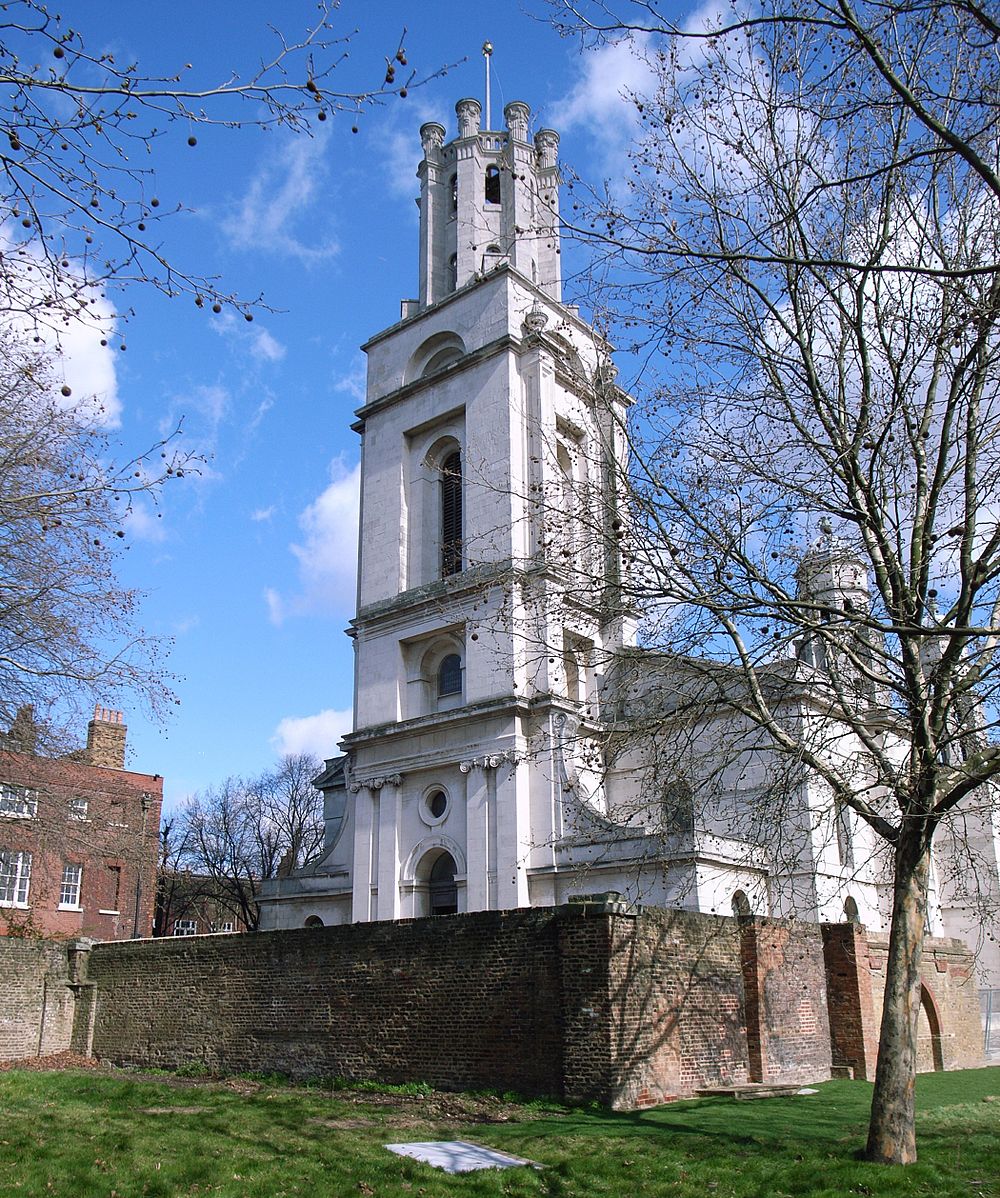
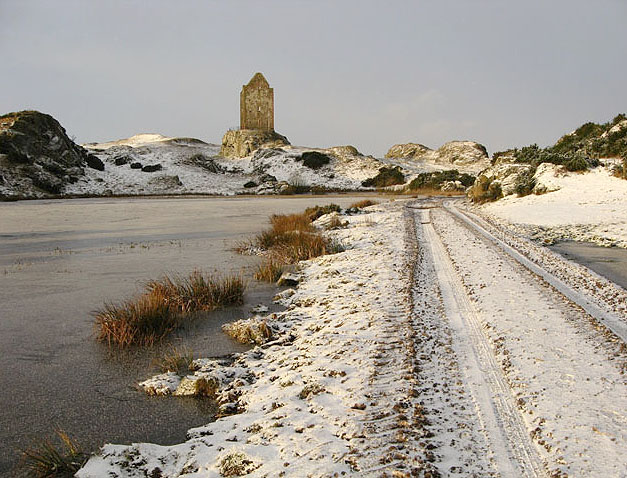
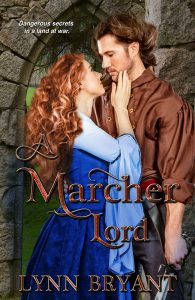


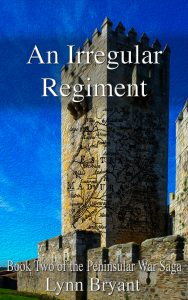

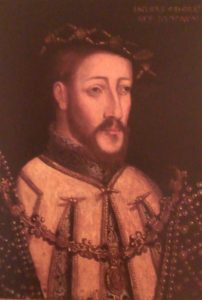



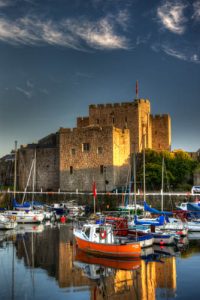
 The storming of the two great Spanish border citadels of Ciudad Rodrigo and Badajoz were the first step in Wellington’s campaign of 1812. It was essential for him to hold these fortresses, known as the keys to Spain and he pushed his army to it’s limits in order to capture them, with huge loss of life and appalling loss of discipline.
The storming of the two great Spanish border citadels of Ciudad Rodrigo and Badajoz were the first step in Wellington’s campaign of 1812. It was essential for him to hold these fortresses, known as the keys to Spain and he pushed his army to it’s limits in order to capture them, with huge loss of life and appalling loss of discipline.